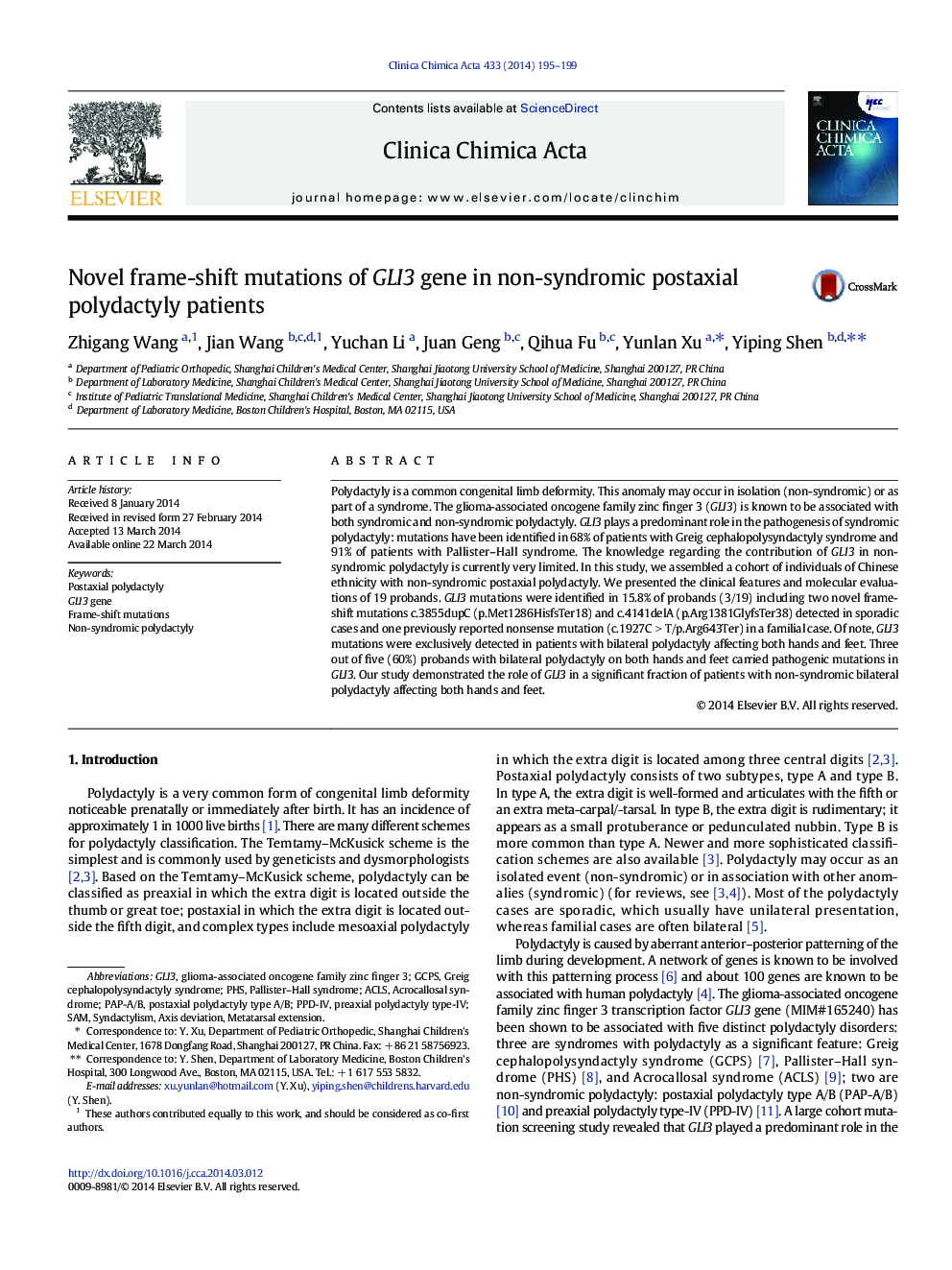| Article ID | Journal | Published Year | Pages | File Type |
|---|---|---|---|---|
| 8312009 | Clinica Chimica Acta | 2014 | 5 Pages |
Abstract
Polydactyly is a common congenital limb deformity. This anomaly may occur in isolation (non-syndromic) or as part of a syndrome. The glioma-associated oncogene family zinc finger 3 (GLI3) is known to be associated with both syndromic and non-syndromic polydactyly. GLI3 plays a predominant role in the pathogenesis of syndromic polydactyly: mutations have been identified in 68% of patients with Greig cephalopolysyndactyly syndrome and 91% of patients with Pallister-Hall syndrome. The knowledge regarding the contribution of GLI3 in non-syndromic polydactyly is currently very limited. In this study, we assembled a cohort of individuals of Chinese ethnicity with non-syndromic postaxial polydactyly. We presented the clinical features and molecular evaluations of 19 probands. GLI3 mutations were identified in 15.8% of probands (3/19) including two novel frame-shift mutations c.3855dupC (p.Met1286HisfsTer18) and c.4141delA (p.Arg1381GlyfsTer38) detected in sporadic cases and one previously reported nonsense mutation (c.1927CÂ >Â T/p.Arg643Ter) in a familial case. Of note, GLI3 mutations were exclusively detected in patients with bilateral polydactyly affecting both hands and feet. Three out of five (60%) probands with bilateral polydactyly on both hands and feet carried pathogenic mutations in GLI3. Our study demonstrated the role of GLI3 in a significant fraction of patients with non-syndromic bilateral polydactyly affecting both hands and feet.
Related Topics
Life Sciences
Biochemistry, Genetics and Molecular Biology
Biochemistry
Authors
Zhigang Wang, Jian Wang, Yuchan Li, Juan Geng, Qihua Fu, Yunlan Xu, Yiping Shen,
